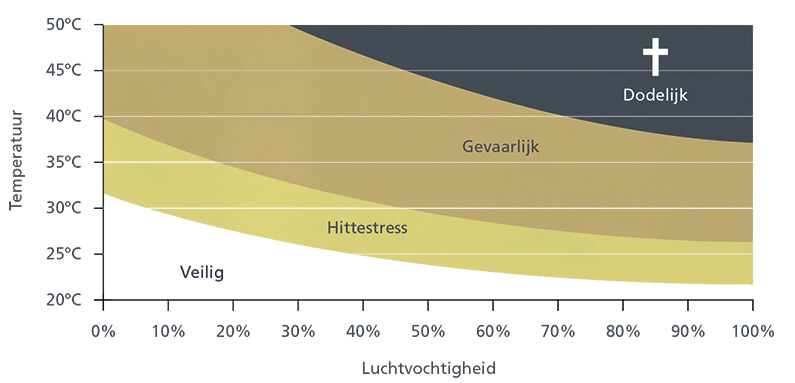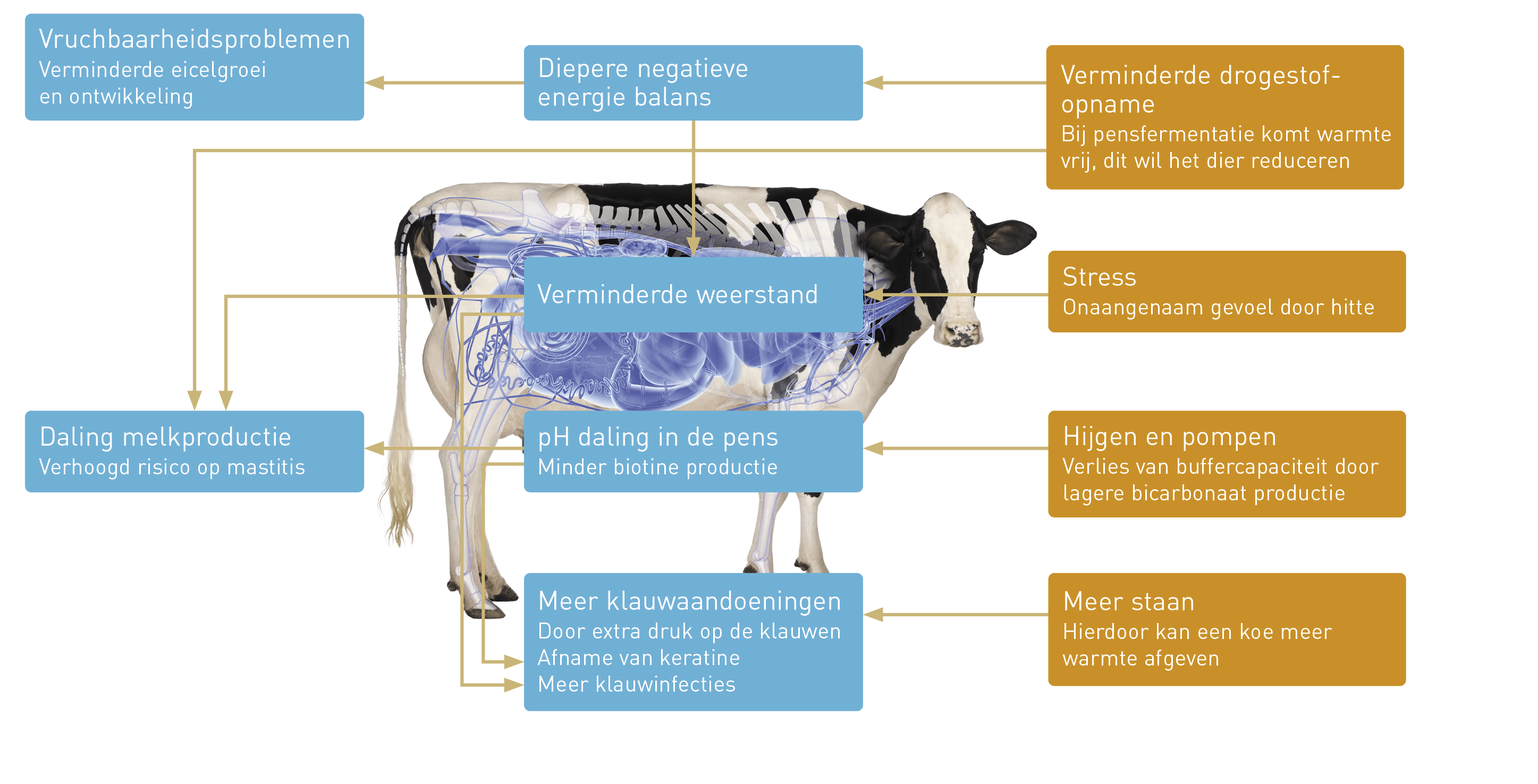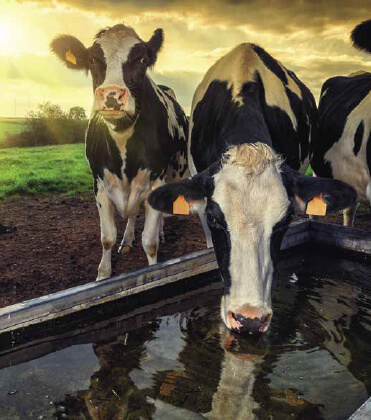Heat stress in dairy cattle; prevention is better than cure!
The warmer period of the year is here again; spring and summer. Cows can experience heat stress when the temperature is not optimal for them.
The ideal temperature for a dairy cow is between -5 C and 18 ⁰C. When the temperature rises above 21 ⁰C, a cow already experiences heat stress. Because a cow cannot sweat, only through its tongue and by means of panting, it can no longer cool itself (NOS Nieuws, 2013) (West, 2003). When a cow starts panting, she loses salts from the saliva called bicarbonate. Bicarbonate is an essential mineral needed for a cow’s digestion and rumination activity. This keeps the rumen pH stable, which prevents a cow from developing rumen acidosis (Van Namen, 2021).

Good cooling, insulation & ventilation
The cow experiences a general clinical picture, with the result that less feed is absorbed and the milk production drops. She also stands up more, which means she can give off more heat (Schrijver, 2020). At a temperature above 26 ⁰C, it is important to realize good insulation in the barn, to spray the roof or even to spray the cows wet. Ventilation is also part of this, by making them dry with air movement. If this does not happen, the humidity will rise and the stress will increase. A cow has no problems with a temperature of up to 30 ⁰C, but she does use extra energy to cool herself.
When the temperature exceeds 30 ⁰C, it is recommended to cool cows by means of mechanical ventilation. Think of blowing air on animals in the cubicles, at the feeding fence, the waiting area for milking and don’t forget the dry cows. When the cows experience (active/passive) ventilation, more heat will be lost. In addition, the overall body temperature drops and the cow takes in more feed (West, 2003).
Feed several times a day!
Because the temperature is higher, the feed in front of the feeding fence becomes less tasty for the cows more quickly. When feeding several times a day (preferably 2 or 3 times a day), the quality of the feed at the feed fence remains better, so that the cows take in more feed than when they are fed once a day. Cows eat up to 22% less with heat stress (Heat stress in cattle, 2017)! In warm weather, feed the cows less rather than more concentrates to optimize rumen function. This includes easily digestible raw fibers for an easily digestible ration. It can be wise to add bicarbonate to keep the salt balance in order.
Allow the animals to acclimatize for a few days after a warm period, so add bicarbonate and give them easily digestible crude fiber for a few days (Gezondheidsdienst voor Dieren, 2020).
Scheme 1 shows the consequences of heat stress in dairy cows. Such as: fertility problems, increased risk of mastitis and more claw disorders. With persistent heat stress, claw and udder health problems often arise at a later stage (Miltenburg, 2014).

A supplementary animal or dietetic feed in the form of a bolus can help:
Topro Fertility bolus is a supplementary dietetic feed in the form of a bolus for cattle to support the preparation for heat and reproduction. Over a period of 8 days, the bolus provides a constant release of trace elements, vitamins and plant extracts.
The Topro Udder bolus contains natural plant extracts based on garlic (molecules isolated from garlic extracts). The bolus supports udder health and general health and has a release time of approximately 21 days.
The Topro Hoof bolus is a mineral dietary feed for cattle to support the regeneration of hooves. This bolus contributes to the claw formation and the production of keratin by adding zinc, vitamin E and biotin (a daily release of 18mg biotin over a period of 60 days). Keratin is an important protein complex for hoof care and hoof quality.




